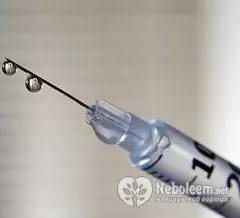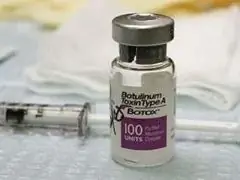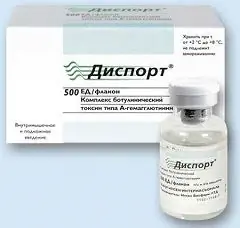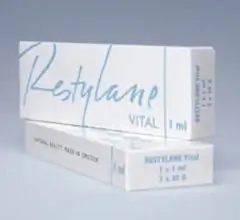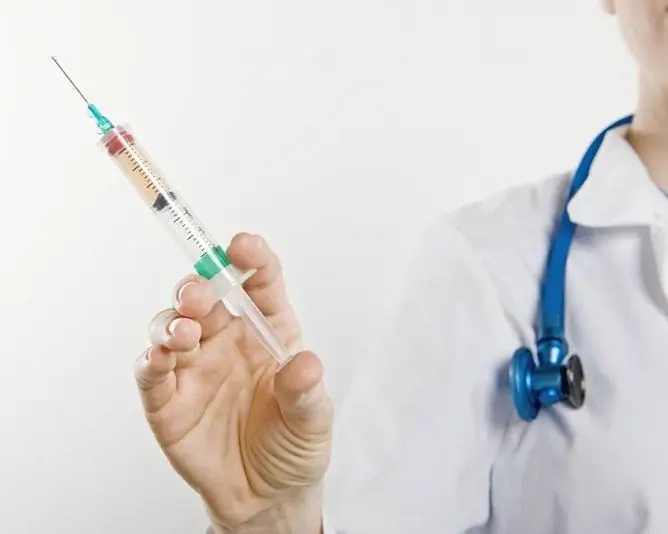Movalis
Movalis: instructions for use and reviews
- 1. Release form and composition
- 2. Pharmacological properties
- 3. Indications for use
- 4. Contraindications
- 5. Method of application and dosage
- 6. Side effects
- 7. Overdose
- 8. Special instructions
- 9. Application during pregnancy and lactation
- 10. For violations of liver function
- 11. Drug interactions
- 12. Analogs
- 13. Terms and conditions of storage
- 14. Terms of dispensing from pharmacies
- 15. Reviews
- 16. Price in pharmacies
Latin name: Movalis
ATX code: M01AC06
Active ingredient: meloxicam (meloxicam)
Producer: Instituto De Angeli SrL (Italy), Boehringer Ingelheim Espana SA (Spain), Boehringer Ingelheim Pharma GmbH & Co. KG. (Germany)
Description and photo update: 2019-16-08
Prices in pharmacies: from 492 rubles.
Buy

Movalis is a drug with anti-inflammatory, analgesic and antipyretic effects, used in the symptomatic treatment of rheumatoid arthritis and osteoarthritis.
Release form and composition
Movalis is available in the following dosage forms:
- Tablets: from pale yellow to yellow, on the one hand - a concave risk and code, on the other (convex with a beveled edge) - the manufacturer's logo, surface roughness is allowed (in blisters of 10 pcs., 1 or 2 blisters in a cardboard box);
- Suspension for oral administration: viscous, yellowish with a green tint (in dark glass bottles of 100 ml, 1 bottle in a cardboard box, complete with a dosage spoon);
- Solution for intramuscular injection: transparent, yellow with a green tint (in colorless glass ampoules of 1.5 ml, 3 or 5 ampoules in blisters or pallets, 1 or 2 packages or pallets in a cardboard box);
- Rectal suppositories: yellowish-green, smooth, at the base - a depression (in blister packs of 6 pcs., 1 or 2 packs in a cardboard box).
The composition of 1 tablet includes:
- Active ingredient: meloxicam - 7.5 or 15 mg;
- Auxiliary components (7.5 mg / 15 mg): magnesium stearate - 1.7 / 1.7 mg, povidone K25 - 10.5 / 9 mg, lactose monohydrate - 23.5 / 20 mg, sodium citrate dihydrate - 15/30 mg, crospovidone - 16.3 / 14 mg, microcrystalline cellulose - 102 / 87.3 mg, colloidal silicon dioxide - 3.5 / 3 mg.
The composition of 5 ml of suspension for oral administration includes:
- Active ingredient: meloxicam - 7.5 mg;
- Auxiliary components: raspberry flavor - 10 mg, sodium benzoate - 7.5 mg, 70% sorbitol - 1750 mg, citric acid monohydrate - 6 mg, sodium saccharinate - 0.5 mg, hyetellose - 5 mg, sodium dihydrogen phosphate dihydrate - 100 mg, xylitol - 750 mg, 85% glycerol - 750 mg, colloidal silicon dioxide - 50 mg, purified water - 2463.5 mg.
The composition of 1 ml of solution for intramuscular injection includes:
- Active ingredient: meloxicam - 10 mg;
- Auxiliary components: glycine - 7.5 mg, meglumin - 9.375 mg, sodium chloride - 4.5 mg, sodium hydroxide - 0.228 mg, Poloxamer 188 - 75 mg, glycofurfural - 150 mg, water for injection - 1279.482 mg.
The composition of 1 rectal suppository includes:
- Active ingredient: meloxicam - 7.5 or 15 mg;
- Auxiliary components: suppository BP (suppository mass), polyethylene glycol glyceryl hydroxystearate (macrogol glyceryl hydroxystearate).
Pharmacological properties
Pharmacodynamics
Movalis is a non-steroidal anti-inflammatory drug that belongs to the category of enolic acid derivatives. All standard models of inflammation confirm the pronounced anti-inflammatory effect of meloxicam. Its mechanism of action is to inhibit the production of prostaglandins, known as inflammatory mediators.
Meloxicam in vivo inhibits the synthesis of prostaglandins in the focus of inflammation to a greater extent than in the kidneys or gastric mucosa. This is due to the higher selectivity of inhibition of cyclooxygenase-2 (COX-2) compared to cyclooxygenase-1 (COX-1). Experts believe that the therapeutic effect of NSAIDs (non-steroidal anti-inflammatory drugs) is associated precisely with the inhibition of COX-2, while inhibition of COX-1, which is one of the constantly present isoenzymes, may contribute to the development of adverse reactions from the kidneys and stomach. The selectivity of the active component of Movalis in relation to COX-2 is confirmed using various test systems, both in vivo and in vitro.
The ability of meloxicam to selectively inhibit COX-2 has been proven when used in vitro with human whole blood as a test system. During the experiment, it was found that the substance (in doses of 7.5 and 15 mg) more actively inhibits COX-2, exerting a more significant inhibitory effect on the production of prostaglandin E2, which is stimulated by lipopolysaccharide (a reaction proceeding under the control of COX-2) than on the synthesis of thromboxane, which is involved in the process of blood coagulation (a reaction under the control of COX-1). The severity of these effects is determined by the dose. Ex vivo studies show that meloxicam (7.5 and 15 mg) does not affect bleeding time and platelet aggregation.
In clinical studies, adverse reactions from the gastrointestinal tract were observed in general less frequently when taking Movalis at doses of 7.5 and 15 mg than when using other NSAIDs taken for comparison. This difference in the incidence of side effects from the gastrointestinal tract in practice is manifested by a more rare occurrence of symptoms such as abdominal pain, nausea, vomiting, and dyspepsia. The incidence of bleeding, ulceration and perforation in the upper gastrointestinal tract, which is believed to be associated with the use of meloxicam, is low and is determined by the dose of Movalis.
Pharmacokinetics
Meloxicam is well absorbed from the gastrointestinal tract, which is confirmed by its high absolute bioavailability after oral administration (up to 90%). After a single dose of the drug, the maximum concentration of the substance in the plasma is reached within 5-6 hours. The degree of absorption does not change when Movalis is combined with food or inorganic antacids. When the drug is taken orally in doses of 7.5 and 15 mg, its blood content is proportional to the dose. Stable pharmacokinetic parameters of meloxicam are established within 3-5 days after the start of therapy. The maximum and basal concentrations of the drug after taking it once a day have a relatively small range of differences, which is 0.4‒1 μg / ml when a 7.5 mg dose is administered, and 0 when a 15 mg dose is administered,8-2 μg / ml (the minimum and maximum concentrations are indicated respectively during the period of stable values of pharmacokinetic parameters). Values outside the specified ranges are sometimes encountered.
After intramuscular administration, meloxicam is completely absorbed. The relative bioavailability compared to oral bioavailability reaches 100%. In this regard, when switching from a solution for intramuscular administration to oral dosage forms of Movalis, there is no need for dose adjustment. After intramuscular administration of 15 mg of the drug, the maximum concentration of the drug in the plasma is reached within about 60–96 minutes and is equal to 1.6–1.8 μg / ml.
Meloxicam is characterized by a high degree of binding to plasma proteins, mainly albumin (approximately 99%). It is determined in synovial fluid, the content of which is about 50% of the substance content in plasma. After repeated oral administration of Movalis in the dose range of 7.5–15 mg, the volume of distribution is approximately 16 liters (the coefficient of variation is from 11 to 32%).
Meloxicam is almost completely metabolized in the liver, forming 4 derivatives that have practically no pharmacological activity. The main metabolite is 5'-carboxymeloxicam (60% of the dose taken), which is formed by oxidation of the intermediate metabolite 5'-hydroxymethylmeloxicam. The latter is also excreted from the body, but in smaller quantities (9% of the dose taken). In vitro studies confirm that the isoenzyme CYP2C9 plays a significant role in this metabolic process. It also additionally involves the CYP3A4 isoenzyme. The formation of two other metabolites (into which, respectively, 16% and 4% of the dose taken) occurs with the participation of peroxidase, the activity of which, presumably, varies depending on the individual characteristics of the organism.
Meloxicam is excreted in equal proportions with urine and faeces, mainly in the form of metabolites. In unchanged form, less than 5% of the daily dose is excreted through the intestines. In urine, only trace concentrations of meloxicam are found unchanged. On average, the half-life is 13-25 hours.
Plasma clearance varies from 7 to 12 ml / min after a single dose of Movalis.
Liver dysfunction, as well as mild renal failure, practically do not affect the pharmacokinetics of meloxicam. The rate of excretion of the drug from the body is significantly higher in patients with moderate renal failure. In patients with end-stage renal failure, meloxicam is less bound to plasma proteins. In this case, an increase in the volume of distribution may cause higher concentrations of free meloxicam; therefore, patients in this category are not recommended to prescribe Movalis in a daily dose of more than 7.5 mg.
In elderly patients, the pharmacokinetic parameters of meloxicam remain practically the same as in young patients. In such patients, the average plasma clearance during the period of stable equilibrium values of pharmacokinetic parameters is slightly lower than in young patients. Observations show that older women have higher values of the area under the concentration-time curve (AUC) and an increased half-life compared with young patients, both male and female.
Indications for use
According to the instructions, Movalis is prescribed for the symptomatic treatment of the following diseases:
- Rheumatoid arthritis;
- Osteoarthritis, including degenerative joint diseases, arthrosis;
- Ankylosing spondylitis.
Contraindications
Absolute:
- A combination of bronchial asthma (full or partial), recurrent polyposis of the paranasal sinuses and nose with intolerance to acetylsalicylic acid or other non-steroidal anti-inflammatory drugs (currently or indications in history);
- Peptic ulcer and / or perforation of the stomach and duodenum (with exacerbation or recently transferred);
- Active gastrointestinal bleeding; recent cerebrovascular bleeding or confirmed diseases of the blood coagulation system;
- Crohn's disease or ulcerative colitis (with exacerbation);
- Progressive kidney disease, severe renal failure (with confirmed hyperkalemia; with creatinine clearance less than 30 ml per minute; in cases where hemodialysis is not performed);
- Hepatic failure in severe form;
- Uncontrolled severe heart failure;
- Postoperative pain associated with coronary artery bypass grafting;
- Rare hereditary galactose intolerance (when prescribing the drug in the form of tablets (the maximum daily dose of Movalis 7.5 / 15 mg, respectively, includes 47/20 mg of lactose));
- Rare hereditary fructose intolerance (when the drug is prescribed in the form of a suspension for oral administration (the maximum daily dose of the drug includes 2450 mg of sorbitol));
- Age up to 18 years (when prescribing the drug in the form of an injection solution); up to 12 years (with the appointment of the drug in the form of tablets, oral suspension, suppositories, with the exception of the use of Movalis in the treatment of juvenile rheumatoid arthritis);
- Pregnancy and breastfeeding period;
- Hypersensitivity to the components of the drug, as well as to acetylsalicylic acid and other non-steroidal anti-inflammatory drugs (there is a possibility of developing cross-hypersensitivity).
Relative (Movalis should be used with caution in the following diseases / conditions):
- Peripheral artery disease;
- Congestive heart failure;
- Diseases of the gastrointestinal tract in history (with Helicobacter pylori infection);
- Cardiac ischemia;
- Cerebrovascular disease;
- Renal failure (with creatinine clearance from 30 to 60 ml per minute);
- Diabetes;
- Hyperlipidemia and / or dyslipidemia;
- Frequent use of alcohol and smoking;
- Long-term therapy with non-steroidal anti-inflammatory drugs;
- Simultaneous appointment with methotrexate at a dose of 15 mg per week;
- Combined use with selective serotonin reuptake inhibitors, antiplatelet agents, anticoagulants, oral glucocorticosteroids;
- Elderly age.
Instructions for the use of Movalis: method and dosage
Movalis is recommended to be used for a short time at the lowest effective dose, as this reduces the likelihood of side effects.
Oral tablets and suspension
Oral Movalis is preferable to take before meals.
As a rule, the following dosing regimen (daily dose) is prescribed:
- Osteoarthritis - 7.5 mg (the dose may be doubled);
- Rheumatoid arthritis, ankylosing spondylitis - 15 mg (it is possible to reduce the dose by 2 times).
With an increased risk of side effects, treatment is recommended to begin with a dose of 7.5 mg per day.
Frequency rate of application - 1 time per day.
For children under 12 years of age, when treating juvenile rheumatoid arthritis, Movalis is prescribed in the form of a suspension for oral administration. The dose is calculated on the basis of body weight - 0.125 mg / kg (maximum - 7.5 mg per day). The following dosing regimen is recommended (amount of active substance / volume of suspension):
- 12 kg: 1.5 mg / 1 ml;
- 24 kg: 3 mg / 2 ml;
- 36 kg: 4.5 mg / 3 ml;
- 48 kg: 6 mg / 4 ml;
- From 60 kg: 7.5 mg / 5 ml.
The maximum dose of Movalis in children 12-18 years old with juvenile rheumatoid arthritis is 0.25 mg / kg, but not more than 15 mg per day.
Solution for intramuscular injection
Movalis injections are usually prescribed intramuscularly only during the first 2-3 days of therapy, after which they switch to the use of enteral forms of the drug.
The recommended daily dose is 7.5 mg or 15 mg (maximum), the frequency of use is 1 time per day. The dose is determined by the severity of the inflammatory process and the intensity of pain.
The injection solution must be injected deeply intramuscularly (intravenous use is contraindicated). Do not mix Movalis with other medicines in the same syringe.
Rectal suppositories
Movalis is recommended to be used in a daily dose of 7.5 mg, according to indications, it can be increased to 15 mg.
Patients with end-stage renal failure who are on hemodialysis are prescribed Movalis in any dosage form at a dose of no more than 7.5 mg per day. Correction of the dosage regimen for moderate or minor functional impairment of the kidneys (with creatinine clearance of 30 ml per minute) is not required.
With the simultaneous use of various dosage forms of the drug, the total daily dose of Movalis should not exceed 15 mg per day.
Side effects
- Respiratory system: rarely - bronchial asthma (in patients with allergy to acetylsalicylic acid or other non-steroidal anti-inflammatory drugs);
- Digestive system: often - abdominal pain, dyspepsia, diarrhea, vomiting, nausea; infrequently - gastrointestinal bleeding (occurring explicitly or latently), bloating, gastritis, constipation, belching, stomatitis; rarely - esophagitis, gastroduodenal ulcers, colitis; very rarely - perforation of the gastrointestinal tract;
- Nervous system: often - headache; infrequently - drowsiness, dizziness;
- Cardiovascular system: infrequently - an increase in blood pressure, a feeling of "flushing" of blood to the face; rarely - palpitations;
- Urinary system: infrequently - changes in the functional parameters of the kidneys (increase in serum levels of urea and / or creatinine), urinary disorders, including acute urinary retention; very rarely - acute renal failure;
- Hematopoietic system: infrequently - anemia; rarely - thrombocytopenia, leukopenia, changes in the number of blood cells, including changes in the leukocyte formula;
- Immune system: infrequently - immediate type hypersensitivity reactions; with an unknown frequency - anaphylactoid and / or anaphylactic reactions, anaphylactic shock;
- Psyche: rarely - changeable mood; with an unknown frequency - confusion, disorientation;
- Sense organs: infrequently - vertigo; rarely - conjunctivitis, tinnitus, visual impairment, including blurred vision;
- Subcutaneous tissue and skin: infrequently - angioedema, itching, skin rash; rarely - urticaria, Stevens-Johnson syndrome, toxic epidermal necrolysis; very rarely - bullous dermatitis, erythema multiforme; with an unknown frequency - photosensitization;
- Biliary tract and liver: infrequently - transient changes in liver function indicators (in particular, an increase in bilirubin or transaminase activity); very rarely - hepatitis;
- General disorders and reactions at the injection site: often - swelling and pain at the injection site; infrequently - edema.
When Movalis is used together with drugs that depress the bone marrow (for example, with methotrexate), cytopenia may develop.
Gastrointestinal bleeding, perforation, or ulceration associated with therapy can be fatal.
As with the use of other non-steroidal anti-inflammatory drugs, during treatment with Movalis, there is a possibility of developing nephrotic syndrome, glomerulonephritis, renal medullary necrosis and interstitial nephritis.
Overdose
Information about Movalis overdose is currently limited. Presumably, it will be accompanied by signs characteristic of an overdose of other NSAIDs. Severe intoxication with the introduction of a large dose of the drug into the body can manifest itself with symptoms such as asystole, changes in blood pressure, pain in the epigastric region, nausea, vomiting, gastrointestinal bleeding, respiratory arrest, acute renal failure, drowsiness, impaired consciousness.
There is no specific antidote. In case of an overdose, it is recommended to evacuate the contents of the stomach and prescribe general supportive therapy. The introduction of cholestyramine accelerates the elimination of meloxicam.
special instructions
When Movalis is used on the skin, such significant disorders as Stevens-Johnson syndrome, toxic epidermal necrolysis and exfoliative dermatitis can develop. Particular attention should be paid to patients with adverse events from the mucous membranes and skin, as well as hypersensitivity reactions to the action of the drug, especially if such reactions were observed during previous courses of treatment. In most cases, skin disorders develop during the first 30 days of using the drug. Sometimes such side effects can cause Movalis to be canceled.
During treatment, bleeding, perforation, and ulcers of the gastrointestinal tract may occur in patients with or without alarming symptoms or a history of gastrointestinal disease. For older patients, the consequences of these complications are more serious.
Patients with gastrointestinal diseases need to be monitored regularly. With the development of gastrointestinal bleeding or ulcerative lesions of the gastrointestinal tract, the use of Movalis should be interrupted.
Treatment with the drug can increase the risk of developing cardiovascular thrombosis, angina attacks, myocardial infarction (sometimes fatal). The risk of such disorders increases with prolonged therapy, as well as in patients with the above diseases in history and in cases of predisposition to their occurrence.
Treatment with Movalis in patients with reduced circulating blood volume or with reduced renal blood flow may cause the development of decompensation of latent renal failure, since the drug inhibits the synthesis of prostaglandins in the kidneys, which are involved in maintaining renal perfusion. As a rule, after discontinuation of Movalis, functional renal disorders disappear. Elderly patients are most at risk of developing these reactions; patients with congestive heart failure, dehydration, liver cirrhosis, acute functional impairment of the kidneys or nephrotic syndrome; patients after major surgical procedures that can lead to hypovolemia. In such patients, at the beginning of therapy, it is necessary to carefully monitor renal function and diuresis. Also, the likelihood of developing latent renal failure increases with simultaneous use with angiotensin II receptor antagonists, diuretic drugs, angiotensin-converting enzyme inhibitors.
With the simultaneous use of Movalis with diuretics, sodium, potassium and water retention may develop, and the natriuretic effect of diuretics may also decrease. Because of this, in predisposed patients, signs of heart failure or hypertension may increase (it is necessary to carry out adequate hydration and carefully monitor the condition of such patients).
Periodically during therapy, it is possible to increase the activity of transaminases in the blood serum or other functional parameters of the liver. This increase in most cases was insignificant and transient. If such violations are significant, or their severity does not decrease with time, it is necessary to interrupt treatment and further monitor the identified laboratory changes.
Before the appointment of Movalis, as well as during combined treatment, it is necessary to conduct a study of the functional state of the kidneys.
Emaciated or debilitated patients need careful monitoring of their condition, since they may be less tolerant of the side effects caused by therapy.
It should be borne in mind that Movalis can mask the symptoms of an underlying infectious disease.
The drug can affect fertility, so the use of Movalis is not recommended for women who have difficulty conceiving.
When performing potentially hazardous types of work that require quick psychomotor reactions and increased concentration of attention (including driving vehicles), it is necessary to take into account the possibility of developing visual impairments, dizziness, drowsiness or other disorders of the central nervous system.
Application during pregnancy and lactation
The appointment of Movalis during pregnancy is contraindicated. Since NSAIDs pass into breast milk, the drug should not be given to nursing mothers.
Meloxicam inhibits cyclooxygenase / prostaglandin synthesis and may affect fertility. It is not recommended for women planning pregnancy. Meloxicam may inhibit ovulation. Therefore, patients who have problems with conception and are being examined for this reason should not take the drug.
For violations of liver function
In patients with compensated liver cirrhosis, there is no need for dose adjustment.
Drug interactions
When Movalis is used together with some drugs, the following effects may occur:
- Selective serotonin reuptake inhibitors: increased risk of gastrointestinal bleeding;
- Other inhibitors of prostaglandin synthesis, including salicylates and glucocorticoids: increases the risk of gastrointestinal bleeding and ulceration in the gastrointestinal tract (due to the synergistic action of drugs; the combination of drugs is not recommended);
- Antihypertensive drugs (diuretics, beta-blockers, vasodilators, angiotensin-converting enzyme inhibitors): their effectiveness decreases;
- Methotrexate: tubular secretion decreases and its concentration in plasma increases without changing pharmacokinetics and hematological toxicity (simultaneous use with doses greater than 15 mg of methotrexate per week is not recommended; you need to constantly monitor kidney function and blood cell count);
- Antagonists of angiotensin II receptors: the decrease in glomerular filtration increases, which can lead to the development of acute renal failure, especially against the background of functional disorders of the kidneys (when prescribing a combination of these drugs, it is necessary to monitor renal function);
- Cyclosporine: increased nephrotoxicity;
- Lithium preparations: the concentration of lithium in the plasma increases (during the administration of Movalis, changes in the doses of lithium preparations or when they are canceled, it is necessary to monitor the concentration of lithium);
- Diuretics: the risk of developing acute renal failure increases with dehydration;
- Cholestyramine: the rate of elimination of meloxicam increases;
- Intrauterine contraceptive drugs: their effectiveness decreases.
Also, when prescribing a combination treatment, the following warnings should be considered:
- Other non-steroidal anti-inflammatory drugs: joint use is not recommended;
- Oral hypoglycemic drugs: it is necessary to consider the possibility of developing interactions;
- Diuretics: Adequate hydration must be carried out, a study of renal function must be carried out before starting therapy;
- Medicines with a known ability to inhibit CYP2C9 and / or CYP3A4: the possibility of a pharmacokinetic interaction must be considered.
Analogs
Movalis analogs are: Artrosan, Amelotex, Meloxicam, Meloxicam-Teva, Movasin, Melbek, Liberum, B-ksikam, Mesipol.
Terms and conditions of storage
Keep out of the reach of children.
Shelf life:
- Oral tablets and suspension: 3 years at temperatures up to 25 ° C;
- Solution for intramuscular injection: 5 years in a dark place at temperatures up to 30 ° C;
- Rectal suppositories: 3 years at temperatures up to 30 ° C.
The shelf life of Movalis in the form of a suspension after opening the bottle is 30 days.
Terms of dispensing from pharmacies
Dispensed by prescription.
Reviews about Movalis
According to reviews, Movalis received a fairly high rating from patients. It is known that meloxicam is rapidly accumulated in the body, excreted rather slowly, and its bioavailability is higher than that of most analogues. A variety of dosage forms allows you to choose the most convenient one in accordance with individual preferences and indications.
High clinical efficacy and minimal incidence of adverse reactions in comparison with other NSAIDs are confirmed by numerous reviews of patients and doctors. For this reason, Movalis is used to treat many pathological conditions that accompany rheumatic diseases of an inflammatory and degenerative nature, as well as to eliminate pain in fever and primary dysmenorrhea.
According to patients, the injections of Movalis, due to the immediate flow of the drug into the bloodstream, can quickly get rid of even severe excruciating pain. Favorable reviews about Movalis tablets, the advantage of which is the possibility of long-term administration (from 1 month to 1.5 years).
The price of Movalis in pharmacies
The approximate price of Movalis in the form of tablets with a dosage of 7.5 mg is 556-680 rubles (the package includes 20 pieces), and for a dosage of 15 mg - 452-573 rubles (the package includes 10 pieces) or 631-795 rubles (the package includes 20 pcs.). On average, you can buy a solution for intramuscular administration for 571-690 rubles (the package includes 3 ampoules) or 789-940 rubles (the package includes 5 ampoules). The cost of a suspension for oral administration varies from 462 to 850 rubles. Rectal suppositories are currently not on sale.
Movalis: prices in online pharmacies
|
Drug name Price Pharmacy |
|
Movalis 15 mg tablets 10 pcs. 492 RUB Buy |
|
Movalis tablets 15mg 10 pcs. 573 r Buy |
|
Movalis 7.5 mg tablets 20 pcs. RUB 606 Buy |
|
Movalis 15 mg / 1.5 ml solution for intramuscular administration 1.5 ml 3 pcs. RUB 613 Buy |
|
Movalis 15 mg tablets 20 pcs. 702 RUB Buy |
|
Movalis tablets 7,5mg 20 pcs. 706 RUB Buy |
|
Movalis solution for intramuscular injection. 15mg / 1.5ml 1.5ml 3 pcs. 719 RUB Buy |
|
Movalis 15 mg / 1.5 ml solution for intramuscular administration 1.5 ml 5 pcs. 825 RUB Buy |
|
Movalis tablets 15mg 20 pcs. 828 RUB Buy |
|
Movalis solution for intramuscular injection. 15mg / 1.5ml 1.5ml 5 pcs. 982 RUB Buy |
| See all offers from pharmacies |

Anna Kozlova Medical journalist About the author
Education: Rostov State Medical University, specialty "General Medicine".
Information about the drug is generalized, provided for informational purposes only and does not replace the official instructions. Self-medication is hazardous to health!



